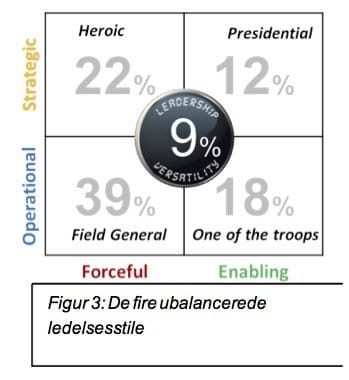When the world changed in Mogadishu
In 1993, two Black Hawk helicopters were shot down in Mogadishu during a US military operation. 18 American soldiers were killed and their bodies dragged through the streets for the world to see. All tactics, strategies and predictions had failed. The US military had misread the situation and the world was no longer the same - something had changed forever.
The defeat came as a shock to the American self-image and worldview. The experience was subsequently summarized in the acronym VUCA, which stands for Volatility, Uncertainty, Complexity and Ambiguity. VUCA is an attempt to put into words the new conditions under which world leaders must operate and encapsulates the experience that reality is increasingly characterized by volatility, uncertainty, complexity and ambiguity.
The VUCA concept has gained a lot of traction in the international business world because it encapsulates the new fundamental conditions of our time that organizations and leaders have to deal with (see e.g. Stacey, Quinn & Cameron, Mintzberg, Majgaard, Lerborg). While it may be a long way from private and public organizations in Denmark to military operations in Mogadishu or Baghdad, the VUCA concept captures a growing recognition that paradoxes, dilemmas, cross-pressures, acceleration and hyper-complexity are part of today's basic organizational conditions that apply to all of us.
Versatile Leadership - mastering an opposing leadership repertoire
But how do you succeed as a leader in a VUCA world? And how should you as an organization adapt to deal with a world that can no longer be formalized and that changes course from day to day?
We believe that versatile leadership is part of the solution. Versatile leadership is about the ability to flexibly navigate complex tasks and conditions and is based on an understanding of leadership developed by Robert Kaplan and Rob Kaiser based on over 30 years of research and consulting practice. Leading with versatility means using leadership skills that are seemingly contradictory. This means that the versatile leader masters the entire leadership repertoire from strategy development to implementation and from supportive leadership to control and management. Kaplan and Kaiser define versatility as:
"(...) the ability to read and respond to changing conditions and circumstances with a full leadership repertoire; the ability to effortlessly utilize opposing approaches to leadership, without being limited by personal preference for one particular leadership style and without prejudice to the opposing leadership style."
(Kaplan & Kaiser, 2003, p. 34, author's own translation)
But what does versatile leadership look like in more concrete terms? Kaplan and Kaiser's understanding of leadership is based on the assumption that the leadership repertoire contains two overarching dimensions (Kaiser, Overfield & Mcginning, 2012; Kaiser, Overfield & Kaplan, 2014):
- How you lead
- What you're looking for
Both dimensions consist of complementary yet opposing leadership competencies. How you lead covers the Forceful and Enabling leadership competencies, while What you lead covers the Strategic and Operational leadership competencies. A versatile leader masters all four areas of the leadership repertoire.
The Versatile Leadership Model represents a balanced both-and approach to leadership. It encompasses a complex understanding of the versatile skills that today's leaders need to succeed in a world of conflicting and changing demands and expectations. They must have an eye for both the long-term perspective, with a focus on growth and innovation, and the short-term, with a focus on implementation and efficiency. At the same time, they must be able to take command, make decisions and make demands on their employees, as well as apply a supportive, listening and more coaching leadership style.
How you lead
The second dimension of the leadership model, strategic leadership, refers to being forward-thinking, innovative and positioning your organization advantageously for the future, while operational leadership refers to creating short-term results, executing and maintaining high efficiency and order in the business (Kaiser, Overfield & Kaplan, 2014, p.6f).
Practice: For most leaders, strategic leadership is the most challenging leadership task (KLS, 2014). This is probably due to the fact that a management career usually starts at the bottom of the management chain, where there is a pronounced need for execution, implementation and streamlining - i.e. Operational leadership. It is therefore important to work on further developing these leadership competencies in connection with the shifts that occur when managers are promoted on their way to the top of the management chain (Dahl and Molly Søholm, 2013).
Not an opt-out, but an opt-in
Some leaders may perceive versatile leadership as a neutral middle ground, forcing them to tone down or abandon their distinctiveness and edge altogether. But this is an unnecessary worry. Versatility isn't about giving up anything, it's about learning to apply your overall skill set more selectively and situationally. Versatility is about being aware of your distinctiveness and edge, while mastering complementary leadership skills with equal strength and precision. Leaders who develop high versatility don't lose their range. On the contrary, they increase it by expanding their leadership repertoire to include both sides of the two leadership dimensions. Versatility means being able to move freely between the two leadership dimensions and take the position that the situation demands - from extremely forceful to extremely enabling and from extremely strategic to extremely operational.
READ MORE ABOUT OUR EDUCATION
LEAD
offers certification in the development of agile leadership with the development tool The Leader's Versatility Index (LVI)
With a certification, you will be equipped to use LVI in development processes in your organization at the individual, group and organizational level.
Unbalanced leadership is the rule
Research shows that leaders often prefer a particular approach to both how and what they manage. Some leaders prefer to keep their heads down in operations and are unable to take an overall strategic view of their area of responsibility or develop their department. Other managers are so deeply engaged in the strategic work of developing and devising plans and strategies that they fail to make day-to-day operations work and may not find them interesting.
When one leadership competency is overemphasized and prioritized at the expense of the complementary one, a double imbalance occurs (Kaiser, 2015). Imbalance is a widespread and well-documented problem. Only 9% of all tested leaders are able to balance the two dimensions' complementary competency pairs to a degree that can be described as versatile (Kaiser, 2014).
The four unbalanced leadership styles
The most common form of unbalanced leadership can be described as "Field General". It sits well above the Forceful and Operational dimensions, comprising 39% of all versatility-tested leaders. It is a leadership style that is often found in the cockpit of companies and units that need to perform consistently (Kaplan and Kaiser, 2006, p.183ff).
The second most common form of unbalanced leadership can be described as "Heroic". This refers to a strong preference for the combination of forceful and strategic leadership, with 22% of the leaders tested falling into this category. Leaders with a heroic leadership style are often passionate speakers with a comprehensive vision for their organization. They also possess a personal attractiveness and intensity that makes them inspiring leaders. (Kaplan and Kaiser, 2006, p.183ff.)
The term "One of the troops" refers to a slightly rarer form of unbalanced leadership, the combination of enabling and operational leadership. Only 18% of the leaders tested practice this leadership style, which is characterized by leaders rolling up their sleeves and working alongside their team in a supportive and facilitative way (Kaplan and Kaiser, 2006, p.183ff).
Finally, the fourth and least common form of unbalanced leadership is called "Presidential". This term refers to a strong preference for enabling and strategic leadership and is only present in 12% of all leaders tested. This leadership style is just as strong on strategic leadership as the heroic leader, but does not exercise leadership with the same heavy hand. Instead, they lead through a collaborative and participative approach.
Unbalanced leadership has a huge impact on business and organizational performance. But where do these imbalances come from and what can be done to address them?

Leadership Focus: From monoculture to diversity - when strengths become too much of a good thing
The fact that leaders and organizations suffer from imbalanced leadership is to some extent attributed to traditional leadership metrics, strength-based leadership and appreciative inquiry, which are based on the simplistic assumption that more of something is always better by definition. In our experience, however, managers can do too much of something that is desirable in principle, but in practice has an excessive and therefore negative effect. For example, managers who are characterized by being very inclusive, supportive and democratic may practice this to such an extent that it negatively affects both their efficiency and their employees' motivation and well-being. In this case, more is not better.
Strengths-based leadership typically shapes leaders with the idea that the best and most effective leaders are those who work on their strengths and leave their weaknesses behind. Similarly, Appreciative Inquiry maintains a rigid focus on what works, combined with a reluctance to learn from what clearly isn't working. However, in a VUCA world of unpredictability where maneuverability is paramount to success, leaders need to learn from both strengths and weaknesses. They need to apply strengths thoughtfully and appropriately, and they need to be able to leverage their weaknesses. In short, they need to master a very broad leadership repertoire.
Versatile leadership? Arguments and benefits
What can Danish organizations and companies achieve by working with versatility? Here are some of the reasons to get started:
- In an analysis of over 13,300 top and middle managers, only 9% were labeled as versatile. That is, only 9% were able to apply the entire leadership repertoire in the form of both leadership dimensions and associated competency pairs (Kaiser, 2015). What could Danish organizations and companies accomplish if their leaders had more leadership competencies to play with?
- The international interest in versatility is due to the fact that versatility is also reflected in leadership effectiveness - not to mention employee engagement, productivity, low employee turnover, high team morale, cohesion, high ownership and confidence in executing the organization's strategies (Kaplan & Kaiser, 2006) (Kaiser & Overfield, 2014).
- Finally, research shows that versatile leaders are also more effective leaders (Kaiser & Kaplan, 2003, p.35).Getting started: Map strengths and weaknessesEffective leadership development and the development of versatility requires taking into account both what the leader does too little of and too much of - strengths and weaknesses. Therefore, developing versatility starts with leaders becoming familiar with the idea that their behaviors can be divided into three groupings: Strengths, Exaggerated Strengths and Deficiencies.
In reality, ineffectiveness and unhappiness can be caused by both too little and too much of one resource or quality (Kaplan & Kaiser, 2013, p.34). Therefore, if you want to work on becoming a versatile leader, you need to start by accepting that overstated/exaggerated strengths are just as big a problem as lacking the competence altogether. The vast majority of leaders have been raised in a monoculture that has blinded them to the necessity of mastering different leadership styles.
But working in, with and under complex conditions, a lot of one strength is not enough. The development task in a VUCA world is to identify what leaders do too little of, too much of and just enough of. And it's a task that a single-minded focus on a single strength cannot solve.



